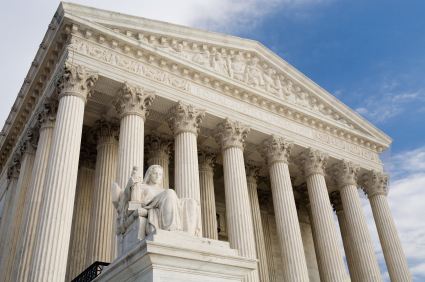In July, the Department of Justice announced there would be a nationwide review of FBI hair analysis practices, including more than 21,000 cases that were handled before 2000. The review would focus on whether FBI lab analysts gave misleading or downright inaccurate testimony regarding their work. But the review isn’t big enough, says a recent article in the Washington Post, pointing out that these very same analysts trained thousands of state and local crime lab workers using the same flawed scientific justifications.
 While hair analysis does have its benefits, being able to identify the race of a person, whether their hair is color treated, what body part the hair comes from, and how it was removed—it’s far from foolproof. No one can say with certainty that a hair comes from someone specifically, merely that the hair resembles other hair samples from that person. Still FBI analysts from the agency’s hair and fibers unit would testify to the work’s infallibility and their own skill in identifying hairs beyond a doubt.
While hair analysis does have its benefits, being able to identify the race of a person, whether their hair is color treated, what body part the hair comes from, and how it was removed—it’s far from foolproof. No one can say with certainty that a hair comes from someone specifically, merely that the hair resembles other hair samples from that person. Still FBI analysts from the agency’s hair and fibers unit would testify to the work’s infallibility and their own skill in identifying hairs beyond a doubt.
There are no statistics on the probability of one hair matching one person. In other words, you may be able to identify that a hair found at a crime scene bears a striking resemblance to the hair of a certain suspect, but you can’t say what, specifically, is the probability that it belongs to that suspect, or the probability that it could match someone else.
Still, federal agents testified as to the exactness of their hair identification, sometimes throwing out statistics at trial that seemed to be drawn out of thin air. It was this practice that caused the DOJ to order a review. It was this practice that has, so far, served to free several people who were wrongfully convicted on the basis of flawed hair-evidence.
The review, however, was limited to federal cases, lab analysts working directly for the FBI. It’s estimated that these FBI analysts trained about 600 examiners belonging to state and local agencies between 1973 and 1987. Another 450 or so were trained between 1987 and 1999. These newly trained state and local analysts, working for their respective agencies, went on to use their training to help convict an unknown number of suspects.
These cases are not under review, at least not federally. The Department of Justice says it would be the responsibility of state and local governments to take up reviews at their level. And it would be safe to bet that no one is officially informing the people who could still be locked up due in part to flawed hair analysis.
Crime evidence is not guesswork, or at least it shouldn’t be. But, more and more often we hear of crime lab workers who are using flawed science, are doing shabby work, or who are passing their lack of knowledge onto the new generation of analysts and chemists—all with little oversight or ramifications.
If you are facing a criminal charge and you are concerned about the evidence against you, let us put you in touch with a local criminal defense lawyer today.
